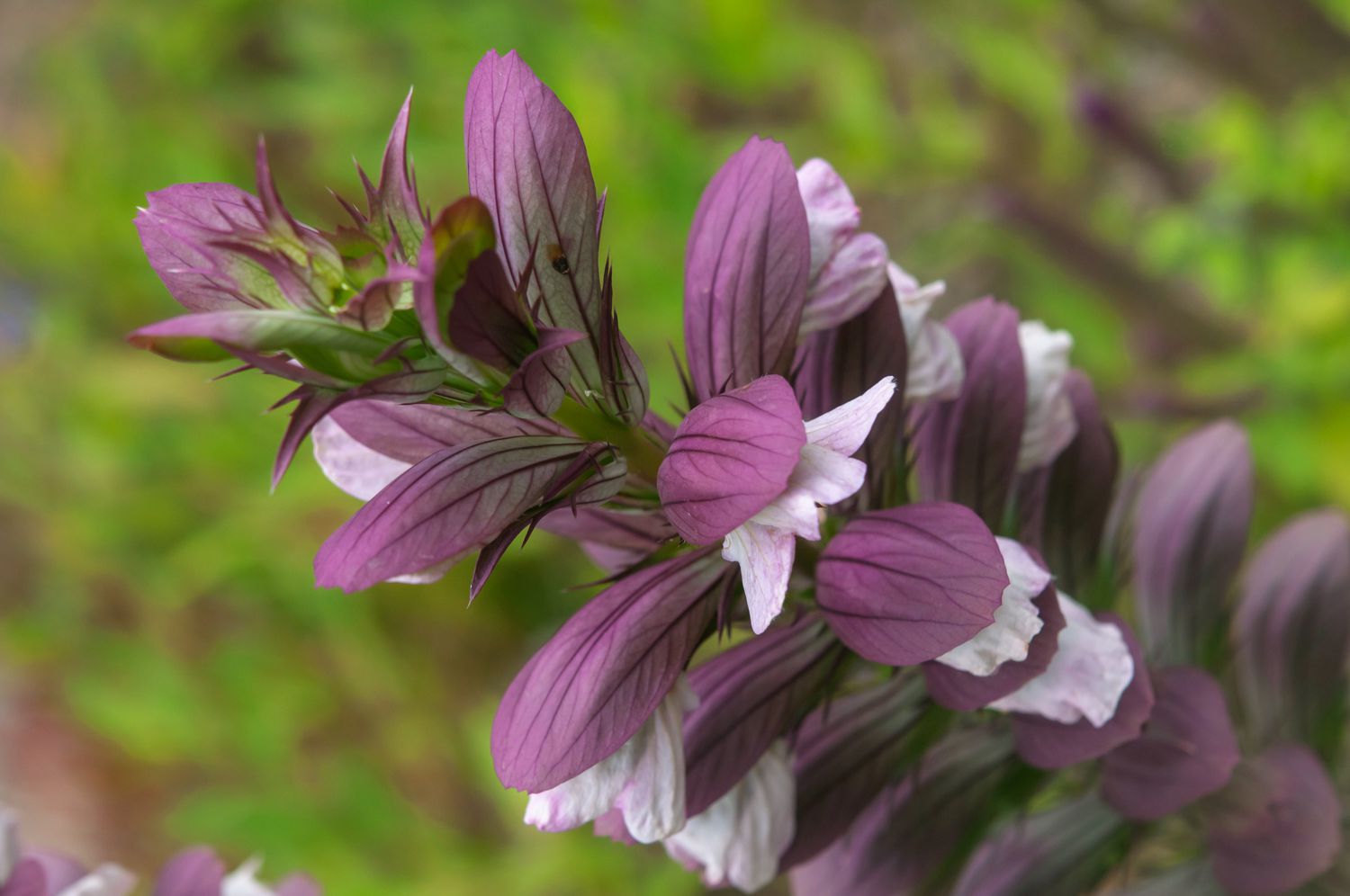
Bear’s Breeches, also known by its scientific name Acanthus mollis, is a fascinating plant that has captivated the attention of plant enthusiasts and gardeners around the world. Native to the Mediterranean region, this perennial herbaceous plant is not only beautiful to look at but also possesses several intriguing qualities that make it stand out from other plants.
In this article, we will explore nine fascinating facts about Bear’s Breeches that will not only increase your knowledge about this unique plant but also leave you in awe of its remarkable characteristics. From its origins in ancient Greek architecture to its medicinal uses, Bear’s Breeches continues to be an enigmatic and valuable addition to gardens worldwide.
Key Takeaways:
- Bear’s Breeches, with its paw-shaped leaves and tall spiky flowers, is a captivating perennial plant native to the Mediterranean. It’s low maintenance, deer resistant, and has a rich history in Greek mythology.
- This striking plant is perfect for architectural gardens and can even be grown in containers for smaller spaces. It has medicinal properties and symbolizes immortality and divine beauty.
Bear’s Breeches is a striking perennial plant
Bear’s Breeches (Acanthus mollis) is a captivating perennial plant that is known for its impressive foliage and striking flower spikes.
The leaves of Bear’s Breeches resemble the shape of bear’s paws
One of the most intriguing features of Bear’s Breeches is its uniquely shaped leaves, which are large, glossy, and deeply lobed, resembling the shape of a bear’s paws.
Bear’s Breeches blooms with tall spiky flowers
During the summer months, Bear’s Breeches produces tall flower spikes that stand out in any garden. These spiky flowers are typically white, pink, or purple and add a touch of elegance to the landscape.
Bear’s Breeches is a popular choice for architectural gardens
Due to its bold and architectural appearance, Bear’s Breeches is often chosen for creating stunning focal points in architectural gardens. Its dramatic foliage and impressive flower spikes make it a true eye-catcher.
Bear’s Breeches is native to the Mediterranean region
Originally hailing from the Mediterranean region, Bear’s Breeches thrives in warm and sunny climates. It has been cultivated for centuries and is often found in gardens across Europe.
Bear’s Breeches has a rich history and symbolism
Bear’s Breeches holds historical significance and symbolism in various cultures. In Greek mythology, it was associated with the god Apollo and was considered a symbol of immortality and divine beauty.
Bear’s Breeches has medicinal properties
In traditional medicine, certain parts of Bear’s Breeches have been used for their therapeutic properties. It has been believed to have anti-inflammatory, diuretic, and astringent effects.
Bear’s Breeches is low maintenance and deer resistant
One of the advantages of Bear’s Breeches is its resilience. It is a low-maintenance plant that can tolerate a wide range of soil conditions and is also known to be deer resistant, making it an ideal choice for gardens.
Bear’s Breeches can be grown in containers
If you have limited garden space, or simply want to showcase the beauty of Bear’s Breeches on your patio or balcony, it can be successfully grown in containers. This allows you to enjoy its unique foliage and stunning flowers in smaller settings.
Conclusion
Bear’s Breeches, also known as Acanthus, is a fascinating plant that has captivated gardeners and plant enthusiasts for centuries. With its unique architectural foliage and stunning flower spikes, it not only serves as a visually arresting addition to any garden but also possesses a rich history and intriguing characteristics.
From its association with ancient Greek and Roman architecture to its medicinal properties, Bear’s Breeches continues to pique our curiosity. Whether you’re planning to grow this plant in your garden or simply interested in learning more about it, exploring these 9 intriguing facts about Bear’s Breeches will certainly deepen your appreciation for this remarkable plant.
FAQs
Q: How tall can Bear’s Breeches grow?
A: Bear’s Breeches can grow to an impressive height of 3 to 4 feet, making them an excellent choice for providing vertical interest in the garden.
Q: Do Bear’s Breeches require full sun?
A: While Bear’s Breeches can tolerate partial shade, they generally prefer full sun exposure to thrive and produce abundant blooms.
Q: How often should I water Bear’s Breeches?
A: Bear’s Breeches prefer moderate watering and well-drained soil. Watering once or twice a week during dry periods should be sufficient.
Q: Can Bear’s Breeches be grown in containers?
A: Yes, Bear’s Breeches can be grown successfully in containers, provided the container is large enough to accommodate the plant’s substantial size and has adequate drainage.
Q: Are Bear’s Breeches deer resistant?
A: Yes, Bear’s Breeches are known for their deer-resistant qualities, which makes them an excellent choice for gardens located in areas with high deer populations.
Q: Are Bear’s Breeches invasive?
A: Bear’s Breeches can be aggressive spreaders in favorable conditions, so it’s essential to monitor their growth and control their spread by removing any unwanted shoots.
Q: Can I propagate Bear’s Breeches from cuttings?
A: Yes, Bear’s Breeches can be propagated from root cuttings during the dormant season, typically in late winter or early spring.
Q: Are Bear’s Breeches toxic to pets?
A: Yes, Bear’s Breeches contain toxic compounds, so it’s important to keep pets away from this plant to prevent any potential harm.
Q: Do Bear’s Breeches attract bees and butterflies?
A: Yes, Bear’s Breeches are known to attract bees and butterflies with their nectar-rich flowers, making them a beneficial addition to pollinator-friendly gardens.
If you're fascinated by Bear's Breeches, why not explore other captivating plants? Discover the delicate beauty of Anemone Hepatica, a charming perennial that adds a pop of color to any garden. Dive into the world of Acanthus, an enigmatic genus with a rich history and striking foliage. For those seeking stunning ornamental plants, Fatsia Japonica is a must-see, boasting unique leaves and an impressive presence. Each plant has its own story to tell, and we invite you to uncover their secrets.
Was this page helpful?
Our commitment to delivering trustworthy and engaging content is at the heart of what we do. Each fact on our site is contributed by real users like you, bringing a wealth of diverse insights and information. To ensure the highest standards of accuracy and reliability, our dedicated editors meticulously review each submission. This process guarantees that the facts we share are not only fascinating but also credible. Trust in our commitment to quality and authenticity as you explore and learn with us.


